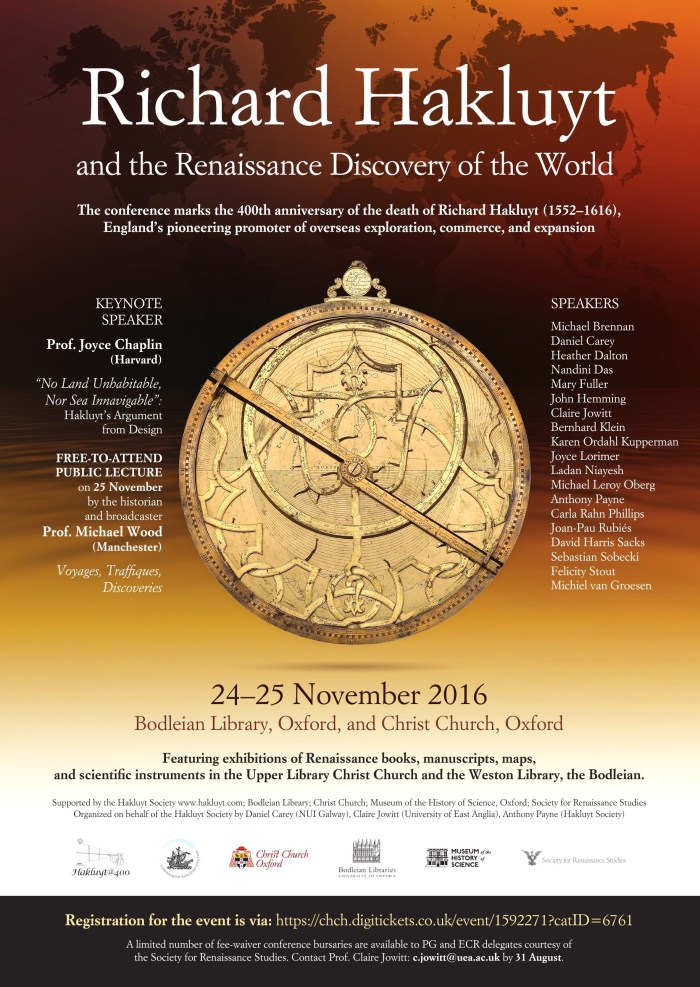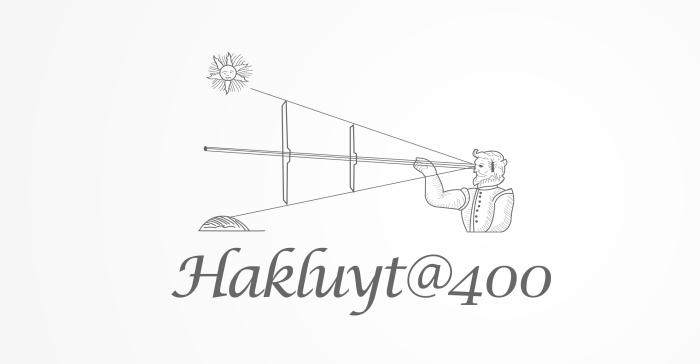The publication of Carla Rahn Phillips’ The Struggle for the South Atlantic ensured that the Relación by the sixteenth-century Spanish clerk Pedro de Rada is now for the first time made available in print. Only acquired by a public institution in 1999, the Relación had a long and still little-known life in private hands. In this blog post, the independent specialist in antiquarian books and Hakluyt Society Council member Anthony Payne sheds light on this story by focusing on the manuscript’s twentieth-century owner, the British solicitor and bibliophile James P.R. Lyell.
– Join the Hakluyt Society on www.hakluyt.com –
A source of great satisfaction for an antiquarian bookseller is to discover a rarity and to see a major work of scholarship result from its acquisition by a research library. One such instance for me was the Hakluyt Society’s publication in December 2016 of The Struggle for the South Atlantic: The Armada of the Strait, 1581–1584, splendidly translated and edited by Carla Rahn Phillips from the Spanish manuscript Relación of Pedro de Rada, now in the Huntington Library, San Marino, California (MS HM 59416).
The Huntington purchased this from the antiquarian booksellers Bernard Quaritch Ltd in 1999, when I was one of the company’s directors. We had bought the manuscript shortly beforehand from another book dealer in London and, as soon as I had catalogued it, we offered it for sale as item 167 in our Catalogue 1257. It was promptly ordered by Bill Frank, the Huntington’s Curator of Hispanic, Cartographic and Western Historical Manuscripts, and was delivered to the library as soon as we received an export licence.
Professor Phillips has identified the 1742 ownership inscription of one Pedro de Chópite (possibly from the Basque country) in the manuscript, but this apart, nothing is known of its history until the twentieth century when it was acquired by James P.R. Lyell (1871–1948), whose distinctive bookplate is affixed to the margin of the first leaf.
A solicitor by profession, Lyell was a distinguished book collector and bibliographer. He developed an especially close relationship with Oxford’s Bodleian Library, which is marked by the bequest of one hundred of his medieval manuscripts to the library and his endowment of the Lyell Readership in Bibliography at Oxford.
At a talk he gave in 1939 on ‘books and book collecting’, Lyell recalled that ‘I began collecting at school – nibs and postage stamps’. He sold his stamps to eke out his father’s allowance as an undergraduate at University College London, and next, while training to become a solicitor, began to collect books, attending his first auction, at Hodgson’s rooms, in 1891. ‘Book-hunting’, the Oxford historian David Ogg remarked, then became Lyell’s ‘absorbing hobby, and if he parted from time to time with some of his treasures he knew there were always others waiting to be tracked down by the discerning collector’.
Early printed books were Lyell’s first interest. In 1914 he chanced to buy at Hodgson’s a copy of the Complutensian Polyglot, the magnificent six-volume Bible printed in Latin, Greek, Hebrew and Aramaic at Alcalá de Henares in 1514–17. When he got home from the sale, Lyell said, ‘I found that I had been fortunate enough to secure at a war-time price one of the most famous books in the world’, and it sparked a deep engagement in all books Spanish that led him to collect almost exclusively in that field for the next dozen or so years.
Not only did Lyell collect, but he learnt Spanish, travelled to Spain, and published a biography of the sponsor of the Complutensian Polyglot, Cardinal Ximenes, Statesman, Ecclesiastic, Soldier and Man of Letters with an Account of the Complutensian Polyglot Bible (London: Grafton, 1917), as well as a major study of Early Book Illustration in Spain (London: Grafton, 1926), which became the standard authority on the subject (in 1997 it appeared in a Spanish edition with updated notes). In time Lyell formed the largest private collection of Spanish books in Britain, but in 1927 he decided to move from London to Oxford and parted with most of its rarities, notably the works illustrated with woodcuts.
An allied bibliophilic pursuit of Lyell’s was his collection of books on the Spanish Armada (‘a very fine one’ he considered it). Research on this was the basis for the B.Litt. thesis awarded to him in 1932, aged sixty-one, as a member of New College, Oxford. He later sold the collection to Thomas W. Lamont, a partner in Pierpont Morgan & Co., who then presented it to Harvard.
It can readily be appreciated, therefore, that Lyell’s acquisition of the manuscript of Pedro de Rada’s Relaciónreflected not only his interest in Spanish books but also in the naval history of the 1580s. I have not been able to discover when or where Lyell obtained it – it was perhaps on one of his visits to Spain, or maybe in the London trade, for example, from the leading booksellers, Maggs Brothers, who handled much high-quality Spanish material in the 1920s. Nor is it clear whether Lyell disposed of it during his lifetime or not. From the mid-1930s his focus turned to medieval manuscripts and these constituted the principal element in the collection dispersed after his death in 1948.
Items not bequeathed to the Bodleian, or bought from Lyell’s executors by the Bodleian (and a few by the National Library of Scotland), were acquired by Quaritch in 1951 and many, but not all, were included in Quaritch’s Catalogue 699, issued in 1952. Rada’s manuscript is not among those in the catalogue. It is possible that it was among Quaritch’s other, uncatalogued, purchases from Lyell’s collection, but this cannot be established from the firm’s surviving records for this period. It seems equally likely that Lyell sold it during the 1930s as his collecting interests developed in new directions.*
Anthony Payne is an antiquarian bookseller and past Vice-President of the Hakluyt Society. Besides his work in the antiquarian book market, Anthony Payne is engaged in historical research and has lectured at Princeton University, the University of York, the Warburg Institute, the National Maritime Museum, Gresham College and University College London. He is currently working on a major bibliographical study of Richard Hakluyt (1552–1616) and has previously published a short introductory survey, Richard Hakluyt: A Guide to His Books and to Those Associated with Him 1580–1625 (London: Bernard Quaritch Ltd, 2008).
* In compiling this blog I have referred to the biography of Lyell by Dennis E. Rhodes in the Oxford Dictionary of National Biography, which concludes that ‘he was a self-taught bibliophile and scholar of extraordinary enthusiasm and discrimination, and one who deserves to be remembered not only by Oxford but by the whole bibliographical world’. I have also drawn on Lyell’s posthumously published talk, ‘Books and Book Collecting’, Bodleian Library Record, vol. 3 (1951), pp. 278–81; R. W. Hunt, ‘The Lyell Bequest’, Bodleian Library Record, vol. 3 (1951), pp. 68–72; Maurice L. Ettinghausen, Rare Books and Royal Collectors: Memoirs of an Antiquarian Bookseller (New York: Simon and Schuster, 1966), pp. 76–8; and Albinia de la Mare’s introduction to her Catalogue of the Collection of Medieval Manuscripts Bequeathed to the Bodleian Library Oxford by James P. R. Lyell (Oxford: Clarendon Press, 1971).
@HakluytSociety – Become a member at www.hakluyt.com – #Hakluyt400






















